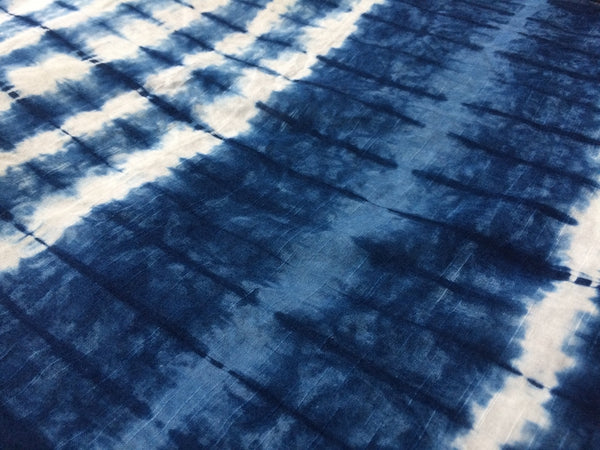The Art and History of Indigo Dye Production and its Cultural Significance
The Art and Science of Indigo Dyeing A Journey Through Time
Indigo dye, derived from the leaves of the indigo plant, has played a crucial role in textiles for thousands of years. Known for its deep blue hue, indigo has captivated cultures across the globe, making it one of the oldest dyes used in the history of fashion. This article explores the historical significance, traditional methods, and contemporary relevance of indigo dye.
Historical Significance
The journey of indigo dye begins in ancient civilizations. Evidence of indigo dyeing dates back to around 2500 BC in the Indus Valley civilization, where artisans extracted dye from the indigenous plant, Indigofera tinctoria. Various ancient cultures, including the Egyptians, Greeks, and Romans, utilized indigo for its vibrant color, often associating it with status and wealth. The dye was so valuable that it was sometimes referred to as blue gold.
In Asia, particularly in countries like India and Japan, indigo dyeing evolved into an art form. In India, the tradition of hand dyeing has been perfected over centuries, leading to intricate designs and patterns. Japanese artisans developed their own techniques, such as shibori, which involves folding and binding cloth to create unique patterns before dyeing. These methods not only reflect cultural aesthetics but also showcase the skilled craftsmanship of the communities involved.
The Indigo Dyeing Process
The traditional process of making indigo dye is both artistic and scientific. It involves several steps, beginning with the cultivation of indigo plants. Once harvested, the leaves are fermented in water, allowing the fermentation process to release indican, a glycoside found in the leaves. This compound then breaks down into indoxyl, which further oxidizes to form the deep blue dye upon exposure to air.
The dyeing process typically involves the use of a dye vat. The yarn or fabric is plunged into the vat, removed, and exposed to air, allowing the color to develop. This step is repeated multiple times to achieve a deeper shade. The true beauty of indigo lies in its unique ability to change color; the bright yellowish-green hue transforms into deep blue as it interacts with air. This characteristic is part of what makes indigo dyeing a captivating practice for artisans.
famous making indigo dye

Cultural Importance
The cultural significance of indigo is immense. In many societies, the craft of indigo dyeing is intertwined with social identity and heritage. In Africa, for instance, indigo dye carries deep spiritual meanings and is often used in rituals and traditional clothing. In India, artisans create beautiful tie-dye patterns, which are symbols of regional identity and pride.
However, the impact of indigo dyeing extends beyond aesthetics and culture. The indigo trade has also had substantial economic implications, shaping the economies of various regions. The colonial period witnessed the exploitation of indigo farmers, leading to social and political upheaval. The Indigo Rebellion in India during the late 19th century highlighted the plight of farmers and their struggle against the oppressive practices of British colonizers.
Contemporary Relevance
In recent years, there has been a resurgence of interest in natural dyes, including indigo, due to a growing awareness of sustainable practices in fashion and textiles. Many contemporary designers and brands are turning towards indigo dyeing as a way to create eco-friendly products. The use of synthetic dyes, which are often harmful to the environment, has prompted consumers to seek out sustainable alternatives.
Moreover, the revival of traditional indigo dyeing techniques supports local artisans and preserves cultural heritage. Workshops and educational programs are emerging worldwide, allowing new generations to learn about this age-old craft and its significance. Through these efforts, indigo dyeing is not just a method of coloring fabric but a means of connecting communities and fostering appreciation for history and sustainability.
Conclusion
Indigo dyeing is a multifaceted practice that weaves together history, culture, and artistry. As we embrace sustainable fashion practices, the continued exploration and appreciation of indigo dyeing become even more essential. This ancient art form not only honors its rich past but also paves the way for future innovations in textile design. Whether through the vivid blues on garments or the stories behind them, indigo dye remains a powerful symbol of creativity and resilience throughout human history.
-
The Timeless Art of Denim Indigo Dye
NewsJul.01,2025
-
The Rise of Sulfur Dyed Denim
NewsJul.01,2025
-
The Rich Revival of the Best Indigo Dye
NewsJul.01,2025
-
The Enduring Strength of Sulphur Black
NewsJul.01,2025
-
The Ancient Art of Chinese Indigo Dye
NewsJul.01,2025
-
Industry Power of Indigo
NewsJul.01,2025
-
Black Sulfur is Leading the Next Wave
NewsJul.01,2025

Sulphur Black
1.Name: sulphur black; Sulfur Black; Sulphur Black 1;
2.Structure formula:
3.Molecule formula: C6H4N2O5
4.CAS No.: 1326-82-5
5.HS code: 32041911
6.Product specification:Appearance:black phosphorus flakes; black liquid

Bromo Indigo; Vat Bromo-Indigo; C.I.Vat Blue 5
1.Name: Bromo indigo; Vat bromo-indigo; C.I.Vat blue 5;
2.Structure formula:
3.Molecule formula: C16H6Br4N2O2
4.CAS No.: 2475-31-2
5.HS code: 3204151000 6.Major usage and instruction: Be mainly used to dye cotton fabrics.

Indigo Blue Vat Blue
1.Name: indigo blue,vat blue 1,
2.Structure formula:
3.Molecule formula: C16H10N2O2
4.. CAS No.: 482-89-3
5.Molecule weight: 262.62
6.HS code: 3204151000
7.Major usage and instruction: Be mainly used to dye cotton fabrics.

